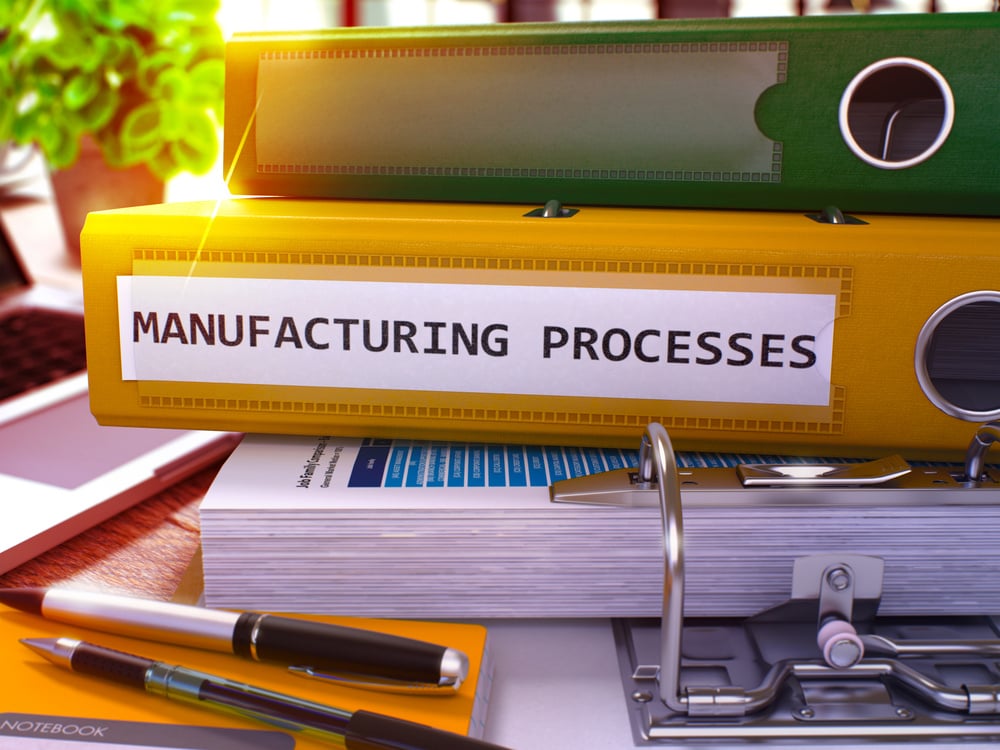Optimizing Manufacturing Document Workflows with Scanning Solutions
Table of contents
In the high-stakes environment of manufacturing, operational efficiency isn't just a priority—it’s a mandate. Whether managing supply chain documents, quality control records, or shipping and receiving forms, manufacturers face a constant stream of paperwork that directly impacts productivity, compliance, and profitability. As enterprises scale and complexity grows, so too does the risk of delays, errors, and siloed information.
That’s where digital document transformation becomes essential. Document scanning solutions are no longer just tools for digitization—they’re strategic enablers that streamline production records, reduce manual data entry, and enhance visibility across the organization. For CIOs, Directors of IT, and Operations Managers, embracing these technologies can translate into measurable gains in speed, accuracy, and cost-efficiency.
This article explores how optimizing manufacturing document workflows with scanning not only addresses long-standing inefficiencies but also sets the stage for smarter, more integrated operations.
The Document Workflow Challenges in Manufacturing
Despite advances in manufacturing automation, document workflows often lag behind—burdened by legacy processes and manual handling. The result? Bottlenecks that slow production, increase costs, and introduce risk. Understanding these pain points is the first step toward meaningful transformation.
High Volume and Complexity of Operational Documents
Manufacturing environments generate a wide array of documents daily—from purchase orders and work instructions to compliance records and shipping manifests. Managing this volume manually can overwhelm staff and lead to storage and retrieval challenges, particularly when documents are paper-based or siloed across departments.
Manual Entry Delays and Inaccuracies
Manual data entry remains one of the most significant barriers to operational efficiency. It's time-consuming, error-prone, and resource-intensive. In industries where accuracy is critical—from aerospace to pharmaceuticals—a single typo can cause production delays or compliance issues. Scanning manufacturing records and automating data capture can dramatically reduce these risks (Scanning Manufacturing Records).
Lack of Real-Time Updates for Stakeholders
Without real-time access to updated documents, stakeholders across supply chain, logistics, and production lines are forced to make decisions based on outdated or incomplete information. This lack of synchronization can lead to miscommunication, delays, and missed opportunities for optimization.
The persistent challenges in manufacturing document workflows underscore the need for digital solutions. Document scanning technologies are uniquely positioned to address these inefficiencies head-on.
How Scanning Optimizes Workflows
Modern document scanning goes far beyond basic digitization. It transforms static paper records into actionable digital assets that drive operational intelligence. By automating capture, ensuring integration, and improving access, scanning becomes a cornerstone of efficiency in manufacturing document management systems.
Automated Capture, Indexing, and Digital Archiving
At the heart of digital document transformation in manufacturing is automated data capture. Advanced scanning systems recognize, extract, and categorize data from a variety of formats—be it invoices, safety logs, or batch records. These documents are then securely archived and made searchable, dramatically cutting down the time spent on document retrieval and reducing human error.
Integration with ERP and Legacy Systems
One of the top concerns for CIOs and IT Directors is whether new systems can work within existing tech stacks. Fortunately, leading scanning solutions—such as those offered by DocCapture—are designed for seamless integration. Whether your enterprise uses SAP, Oracle, or a proprietary ERP, scanning workflows can be tailored to enhance rather than disrupt.
Improved Visibility and Cross-Departmental Access
Scanned documents stored in a centralized, cloud-accessible system ensure that everyone—from the shop floor to upper management—has real-time access to the latest information. This transparency not only supports faster decision-making but also fosters better collaboration between departments like procurement, production, and compliance.
For a broader look at how document scanning enhances manufacturing operations, check out: How Document Scanning Can Optimize Manufacturing Processes.
Business Benefits
By streamlining production records and reducing manual data entry, scanning technology delivers clear business advantages. These benefits extend across departments, driving both immediate efficiencies and long-term strategic value.
Boost in Efficiency and Productivity
With scanning, staff spend less time entering data and more time on high-value tasks. Workflow automation accelerates processes such as invoicing, quality checks, and shipping documentation. The result? Faster cycle times, fewer delays, and a leaner operational model.
Better Compliance and Audit Readiness
Compliance is non-negotiable in industries like automotive, aerospace, and medical manufacturing. Scanned documents are easier to store securely, track, and retrieve for audits. They also support version control and document retention policies, ensuring alignment with industry regulations (compliance with document scanning).
Labor Cost Reduction and Fewer Errors
Reducing manual document handling not only cuts labor costs but also reduces the frequency of costly mistakes. Automated indexing and validation tools flag inconsistencies before they escalate, saving thousands in potential rework or penalties.
Smoother Communication Between Departments
A centralized document system enhances cross-functional collaboration. Procurement teams can instantly verify shipping records; quality control can access compliance data without delays. This alignment improves coordination across the production lifecycle and strengthens your supply chain responsiveness.
For more on the impact of digital workflows, read: Manufacturing in the Digital Era: Streamlining Production Records.
Addressing Common Objections
Despite the clear benefits, some manufacturing leaders remain hesitant to adopt scanning technologies. Common concerns include integration challenges, security risks, and uncertainty about ROI. Here’s how modern solutions effectively address each of these issues.
Integration Capabilities with Existing Infrastructure
A top concern is whether scanning systems will disrupt current operations or require major overhauls. The reality is that today’s document scanning platforms—such as those from DocCapture—are built for adaptability. They integrate smoothly with legacy systems, ERPs, and custom databases, allowing for phased implementations that minimize downtime.
Strong Security and Compliance Features
Manufacturing organizations manage sensitive data, from proprietary blueprints to regulatory documents. Modern scanning solutions are equipped with encryption, role-based access, and audit trails to safeguard information. These features not only protect against breaches but also support compliance with industry standards like ISO, FDA, and OSHA.
High ROI and Scalable Investment
Scanning solutions often pay for themselves quickly through labor savings, reduced error rates, and improved throughput. Additionally, they scale as your organization grows—supporting additional facilities, more document types, and higher volumes without the need for entirely new systems. This scalability makes them a wise long-term investment.
DocCapture’s Advantage
For manufacturing enterprises seeking a reliable partner in digital document transformation, DocCapture offers unmatched value. With deep industry experience and a focus on seamless integration, DocCapture goes beyond basic scanning to deliver a tailored, end-to-end solution.
Proven Industry Expertise and Seamless Integration
DocCapture understands the unique challenges of manufacturing environments—whether it's managing complex production documentation, maintaining compliance, or supporting real-time operational visibility. Their solutions are engineered to fit into your existing ecosystem, integrating effortlessly with ERPs, MES platforms, and document management systems.
By working with DocCapture, manufacturers gain more than just digitized documents—they gain a strategic ally in process improvement and operational optimization. Learn more about how DocCapture supports industry leaders on their digital transformation journey:
👉 Document Scanning for Manufacturing
For deeper insight into industry-specific applications, explore:
Conclusion
In today’s competitive manufacturing landscape, operational agility is vital—and outdated document workflows can be a serious liability. By optimizing manufacturing document workflows with scanning, enterprises can eliminate inefficiencies, reduce manual entry, and unlock real-time visibility across departments. The result is not only faster production and improved compliance but also a scalable digital infrastructure ready for future growth.
DocCapture stands at the forefront of this transformation, offering secure, integrated, and cost-effective scanning solutions tailored to manufacturing needs. If you're ready to reduce errors, streamline records, and boost efficiency, now is the time to act.
Fill out our “get a quote” form to start your digital transformation journey with DocCapture today.
Share this
You May Also Like
These Related Stories

Integrating Digital Solutions with Existing Manufacturing Systems

Real-Time Data Updates in Manufacturing with Document Scanning

